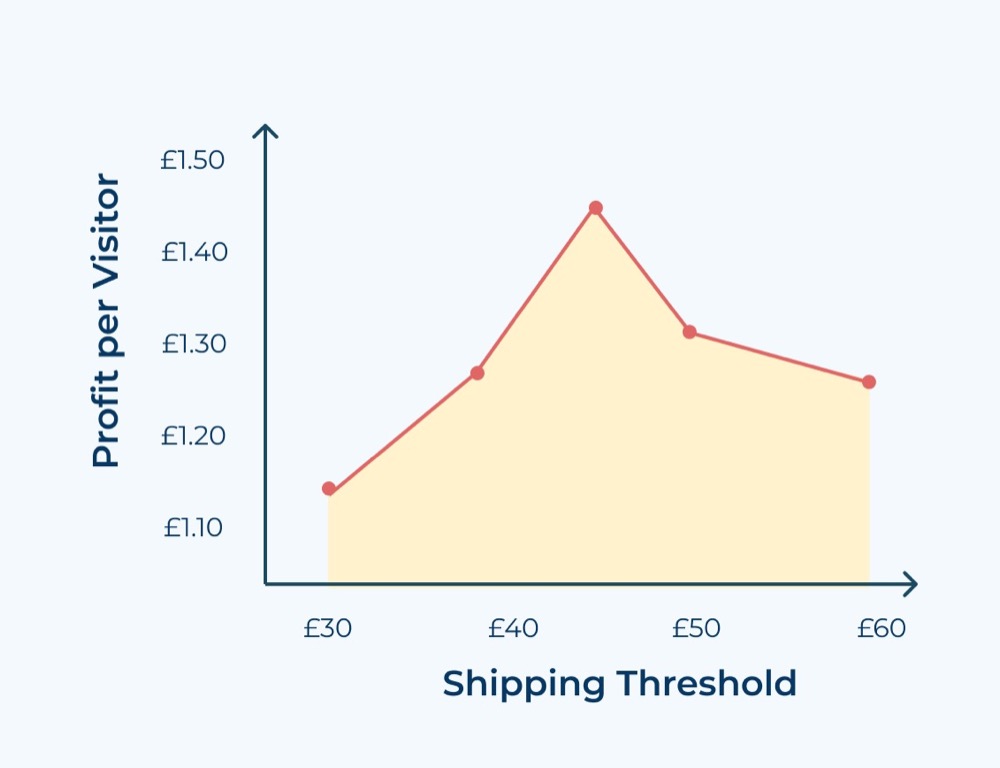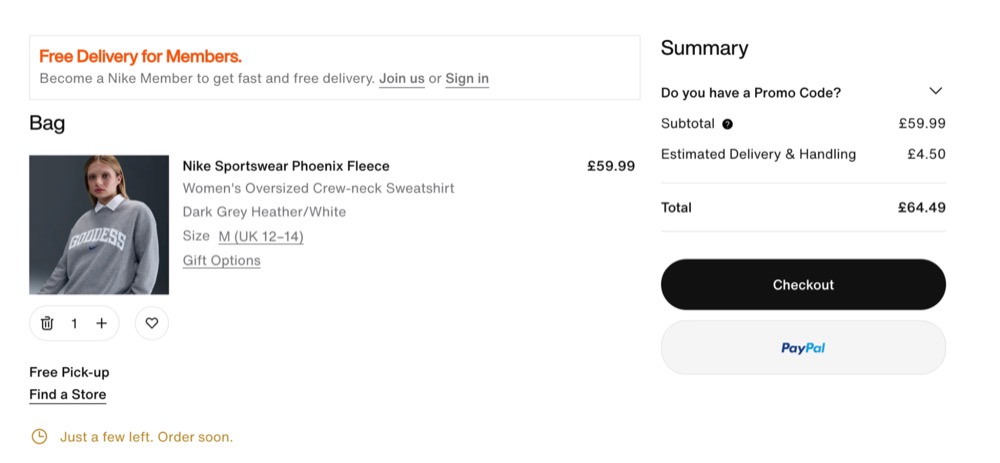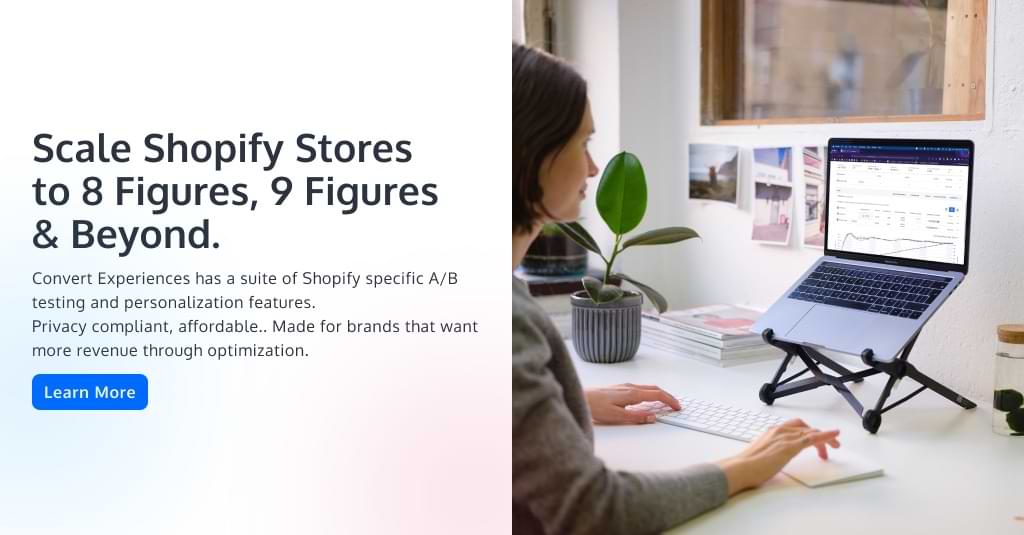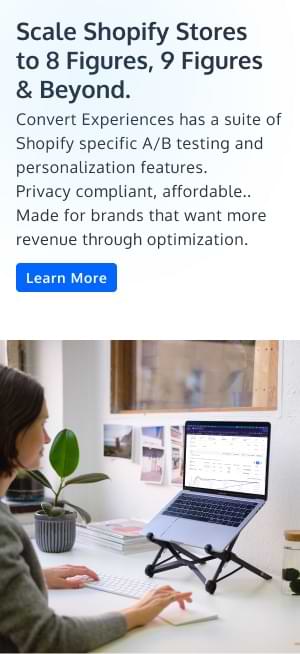How to Test Shipping Prices Without Killing Conversion
A step-by-step guide to experimenting with shipping costs
Shipping thresholds are one of the most underrated yet powerful levers in eCommerce. Set them too low, and you bleed margin. Set them too high, and you risk abandoned carts.
So, how do you know when it’s time to test… and what exactly to test?
This quick guide breaks it down, including key success metrics, so by the end, you’ll feel confident running your own shipping threshold experiments.
How do you know if you should test shipping rates?
The general rule of thumb is that if your Average Order Value is near or above your free shipping threshold, you might be charging too little. Now, as with anything, there are always exceptions, for example:
- You sell a single product that customers rarely purchase more than once
- You offer subscriptions, where free shipping is often expected as part of the commitment
- You’re in a category where free shipping is the norm
You might also test thresholds if low AOVs are hurting your margins. In this case, shipping rates are one of many tools to improve your margins.
It may be worth testing a higher minimum spend for free shipping. If you’re unsure whether shipping costs are a meaningful lever, and you currently charge for shipping, try offering limited-time free shipping on all orders. A strong uptick in conversions typically indicates that shipping thresholds are influencing demand.
Pre-requisites to testing around shipping thresholds
If you’re one of those websites where customers have to get all the way to checkout—and enter their address—just to see shipping costs… First of all: shame on you. Whether or not you’re testing shipping, that needs fixing. Clarity upfront not only improves the customer experience but also impacts the success of your tests. I get so frustrated in those moments, and I know I’m not the only one.
Here are a few baseline best practices:
- Clearly display shipping rates on product pages
- Set up your cart to make shipping costs easy to see, and use them to encourage higher spend
If the first time you increase the threshold doesn’t have any effect, don’t be afraid to test rates in between. For example, if you went from £40 to £50, you could also test £45. It’s all about finding the sweet spot.
Measuring performance
Don’t panic if conversion rates dip. If AOV or revenue per visitor increases enough to offset the drop, you’re still winning. The goal isn’t just more orders, it’s more profitable ones.
Tools like Convert can help you track revenue per visitor, which serves as a strong proxy for profit. Just be sure to cross-check with actual margin data, especially if your margins vary, since a higher AOV doesn’t always mean higher profitability.
Also consider how new vs. repeat customers respond. Keep an eye on repeat purchase rate and segment performance data to ensure you’re not accidentally hurting customer loyalty. If that becomes a concern, one fix is to offer free shipping to loyal customers or your email list. That’s what Nike does, where Members get free shipping as well as exclusive product access, member-exclusive offers and more.
You should be willing to accept a small drop in conversion rate or customer count if it leads to better overall profitability.
Here are your five steps to testing shipping thresholds:
- Determine your baseline: What are your current AOV, conversion rate, and shipping costs?
- Define your hypothesis: What insights or data drive the change you want to test?
- Choose your test increment: For example, raise the threshold from £40 to £50, or test multiple thresholds to find the sweet spot.
- Define your metric: Ideally, use profit per visitor. If that’s too complex, revenue per visitor is a solid proxy.
- Deep dive into the data: Analyze not just conversion and AOV, but actual profitability and customer segments to fully understand the impact.
Get creative in your approach
It’s not just the minimum AOV you can test—there are other levers worth exploring:
- Shipping tiers based on product types or fulfilment costs
- Delivery options, like offering premium shipping for faster delivery
- Framing, or how you communicate shipping costs and thresholds
You can’t test endlessly, but if your audience responds well, it’s worth pushing further, especially when it comes to framing. A small shift in how you present shipping can make a big difference.
For example, a meal shake brand I worked with ran into friction when the free shipping threshold sat just above the price of two bags. Customers felt tricked. We reframed the message to highlight “free shipping from 2+ bags,” and it not only improved performance, it also improved customer understanding and satisfaction.
Another interesting framing I’ve seen is about explaining that the shipping rates are linked to sustainability goals and combining the bigger basket size with additional discounts to make the customers feel they benefit from it too (e.g., 10% off when you order 3 or more products).
Time to ship the test
Shipping thresholds might seem like a small detail, but they have a big impact on both your customer experience and your business’s bottom line. Done right, testing thresholds can boost AOV and protect your margins.
Over the years, I’ve tested this a few times, and almost every time, it’s had a positive impact, but it was rarely one test. It was a combination of tests around finding the right threshold, framing, and more. Don’t forget the extra clarity that often comes with testing around shipping benefits your customer, too.
Craig Kistler, Senior Director Personalization & Experimentation at Signet Jewelers shared his experience with this too:
“We tested this exact approach. When we doubled the shipping threshold, we saw a dip in our eCom KPIs at first. But when we looked at the bigger picture, overall revenue increased.
One thing that really stood out was how important the clarity of messaging was, which you also called out. In our first version of the test, we removed all mentions of free shipping. That kept things clean from a testing perspective, but it meant visitors had no idea free shipping was available until they reached the checkout flow.
In the second round, we kept the higher threshold but brought back the messaging with a clear “Free on Orders $199+” callout. That brought our KPIs back up to the baseline while still maintaining the lift in revenue.That second version made it clear that people weren’t reacting to the higher threshold as much as they were reacting to the absence of clear info.”
So remember: it’s not just the number you set, it’s how you frame and present it that drives results. The key is to go beyond just tracking conversion rate. Focus on revenue per visitor and, when possible, profit per visitor. A small dip in conversions is okay if the orders you do get are more valuable and you’re building a healthier, more sustainable business. Don’t be afraid to scare off one or two customers for the greater good of your business.
Written By
Daphne Tideman
Edited By
Carmen Apostu





